The kitchen sink is one of the most commonly used surfaces in the home, so it’s important to clean and disinfect it regularly. It is also important to know how to disinfect kitchen sink without bleach. Unfortunately, many people rely on bleach to do this job, which can be harmful to both your health and the environment.
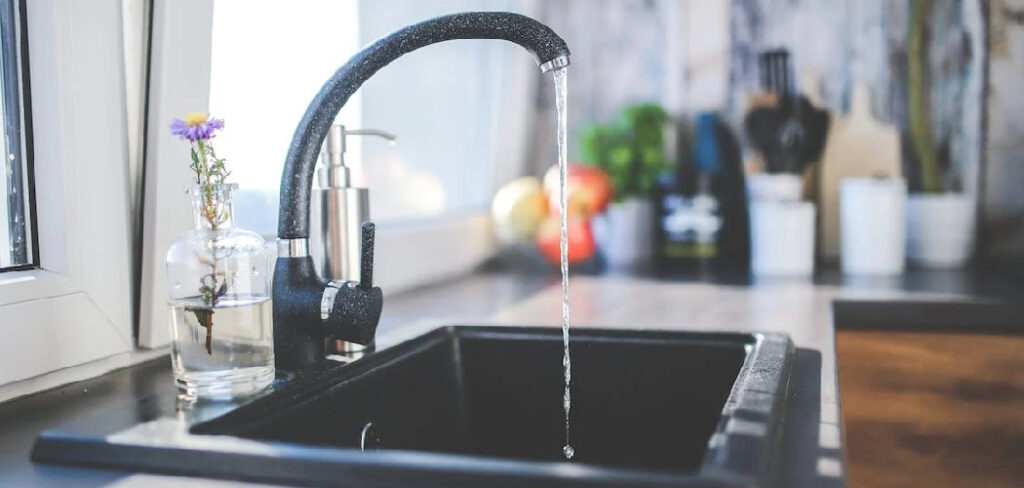
There are several alternatives to bleach that can be just as effective at disinfecting your kitchen sink. If you’re looking for a natural way to disinfect your kitchen sink, you’ve come to the right place. In this blog post, we’ll discuss some of these alternatives and show you how to use them.
5 Real Importance of Disinfecting Kitchen Sink Without Bleach
1. Reduces the Risk of Foodborne Illness
One of the most important reasons to disinfect your kitchen sink is to reduce the risk of foodborne illness. Foodborne illnesses are caused by bacteria, viruses, or parasites that can contaminate food. These contaminants can come from many sources, including contaminated water, unclean surfaces, or sick people. By disinfecting your kitchen sink, you can help to prevent these contaminants from coming into contact with your food.
2. Kills Harmful Bacteria
Another reason to disinfect your kitchen sink is to kill harmful bacteria. Bacteria are tiny organisms that can cause a variety of illnesses, ranging from mild stomach upset to life-threatening diseases. Some types of bacteria are also responsible for food spoilage. By disinfecting your kitchen sink, you can help to prevent these bacteria from multiplying and causing illness or spoilage.
3. Prevents the Spread of Illness
Disinfecting your kitchen sink can also help to prevent the spread of illness. If someone in your household is sick with a contagious illness, such as the flu, there is a risk that they will spread it to others by touching common surfaces, such as door handles or countertops. By disinfecting your kitchen sink, you can help to reduce the risk of spreading illness to others in your household.
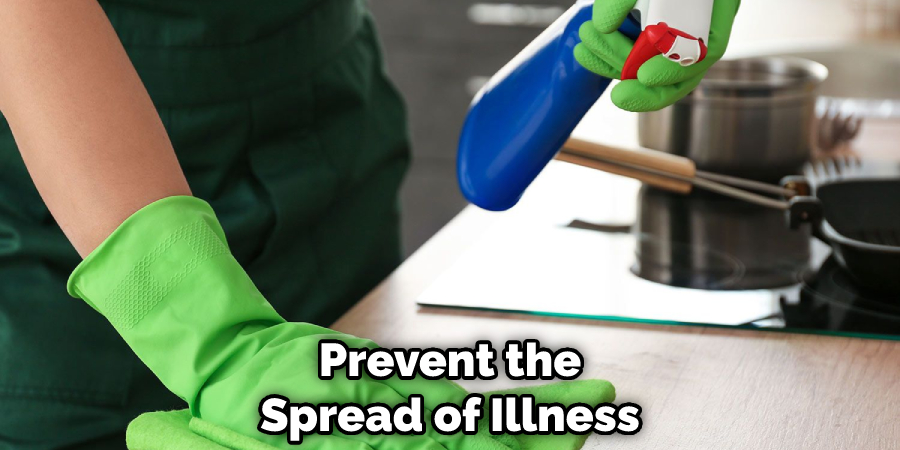
4. Keeps Your Kitchen Clean
In addition to preventing illness, disinfecting your kitchen sink can also help to keep your kitchen clean. Bacteria and other contaminants can build up on surfaces over time, making them more difficult to clean. By disinfecting your kitchen sink regularly, you can help to prevent this build-up and keep your kitchen clean.
5. Protects Your Family’s Health
One of the most important reasons to disinfect your kitchen sink is to protect the health of your family. When you disinfect surfaces in your home, you are helping to create a safe environment for your family members. This is especially important if you have young children or members of your family who are immunocompromised, as they are at an increased risk of becoming ill if they are exposed to bacteria or other contaminants.
Materials You Will Need
- White vinegar
- Baking soda
- Lemon juice
- Hydrogen peroxide
- Essential oils (optional)
- Clean cloths or sponges
8 Steps Guide on How to Disinfect Kitchen Sink Without Bleach
Step 1: Begin by Cleaning
You have to clean your kitchen sink with a clean cloth or sponge and warm, soapy water. The kitchen sink is one of the most important places in the home to keep clean. It’s not only a place where we prepare food, but it’s also a place where we wash our hands and utensils. As a result, it’s essential to disinfect the kitchen sink regularly.
One of the simplest and most effective ways to do this is to clean the sink with a clean cloth or sponge and warm, soapy water. The soap will help to remove any dirt and debris, while the warmth will help to kill any bacteria that might be present. Once you’ve scrubbed the sink, be sure to rinse it well with clean water. By taking these simple steps, you can help to prevent the spread of illness-causing bacteria in your kitchen.
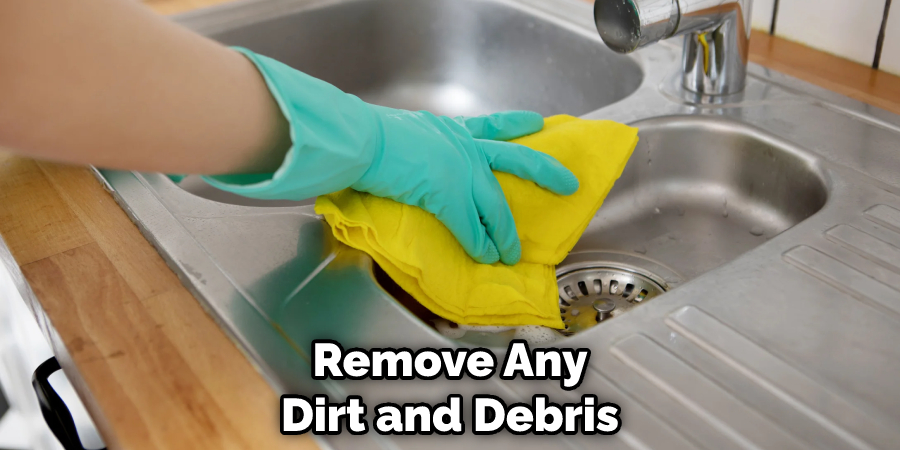
Step 2: Make a Paste
One way to disinfect your kitchen sink without using bleach is to make a paste out of baking soda and water. Simply mix equal parts baking soda and water in a bowl, then apply the paste to your sink with a sponge. Scrub the sink well, then rinse with clean water.
This method is effective at disinfecting the sink, but it is important to remember that it will not kill all bacteria. For more thorough cleaning, you can also add vinegar to the mixture. Just be sure to rinse the sink well after cleaning, as vinegar can leave behind an unpleasant smell.
Step 3: Use White Vinegar
Looking for a simple and effective way to disinfect your kitchen sink without bleach? Look no further than your pantry! White vinegar is a powerful disinfectant that can kill harmful bacteria and germs. Furthermore, it is safe to use around children and pets, and won’t leave behind any toxic residue. To disinfect your sink with white vinegar, simply mix equal parts vinegar and water in a spray bottle.
Then, thoroughly clean your sink with the mixture, paying special attention to any areas that look dirty or grimy. Let the solution sit on the surface for a few minutes before wiping it away with a clean cloth. You’ll be amazed at how sparkling clean your sink will be!
Step 4: Create an All-purpose Cleaner
By combining lemon juice, hydrogen peroxide, and essential oils in a spray bottle. Kitchens can be a breeding ground for bacteria, so it’s important to keep them clean. However, many commercial cleaners contain harsh chemicals that can be harmful to your health. A simple and effective way to disinfect your kitchen is to make your all-purpose cleaner using lemon juice, hydrogen peroxide, and essential oils.
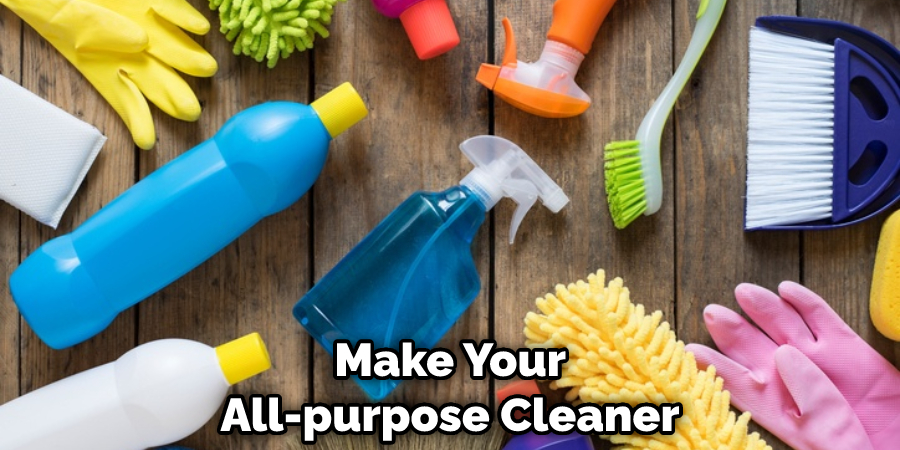
Simply mix these ingredients in a spray bottle and use them to clean surfaces like countertops, sinks, and appliances. Not only will this cleaner disinfect your kitchen, but the lemon juice and essential oils will also leave it smelling fresh and natural. Best of all, you can feel good knowing that you’re not exposing yourself or your family to potentially harmful chemicals.
Step 5: Rinse Away Any Remaining Debris
You have to rinse with warm water and a clean cloth or sponge. Anywhere bacteria can grow. In the kitchen, this includes places like cutting boards, countertops, utensils, and – of course – sinks. To keep your kitchen bacteria-free, it’s important to clean and disinfect all of these surfaces regularly. One way to do this is by using bleach. However, many people are hesitant to use bleach in their homes due to its strong smell and potential health risks.
Luckily, there are other ways to disinfect surfaces that are just as effective as bleach – without the harsh chemicals. One such method is using vinegar. Vinegar is a natural disinfectant that is known to be effective against harmful bacteria like E. coli and salmonella. To use vinegar to disinfect your sink, simply mix equal parts vinegar and water in a spray bottle and use it to wipe down the surface of your sink.
Let the solution sit for a few minutes before wiping it away with a clean cloth or sponge. You can also add a few drops of essential oils to the solution to help mask the vinegar smell. Another option for disinfecting your sink is by using hydrogen peroxide.
Step 6: Fill Your Sink With Hot Soapy Water
Allow It to sit for at least 5 minutes before draining it out of the sink. The kitchen sink is one of the most important places in the home to keep clean. It’s where we prepare food, wash dishes, and often eat meals. Unfortunately, it’s also a prime spot for bacteria to grow. To keep your sink clean and disinfected, start by filling it with hot, soapy water. Allow the water to sit for at least 5 minutes before draining it out of the sink.
This will help to kill any bacteria that are present. You can then rinse the sink with clean water and dry it with a clean cloth. For an extra level of protection, you can also disinfect your kitchen sink with bleach. Simply mix 1 part bleach with 10 parts water and apply it to the sink with a sponge or cloth. Allow the solution to sit on the surface for at least 5 minutes before rinsing it off with clean water. By taking these simple steps, you can help to keep your kitchen sink clean and free of harmful bacteria.
Step 7: Wipe Down the Surface
Gram-negative bacteria are present in most kitchens and are the cause of common foodborne illnesses such as E. coli, salmonella, and listeria. These bacteria can spread quickly through contaminated surfaces, making it important to disinfect kitchen sinks regularly. One way to do this is to wipe down the surface and sides of the sink with a clean cloth or sponge, making sure to get into any crevices.
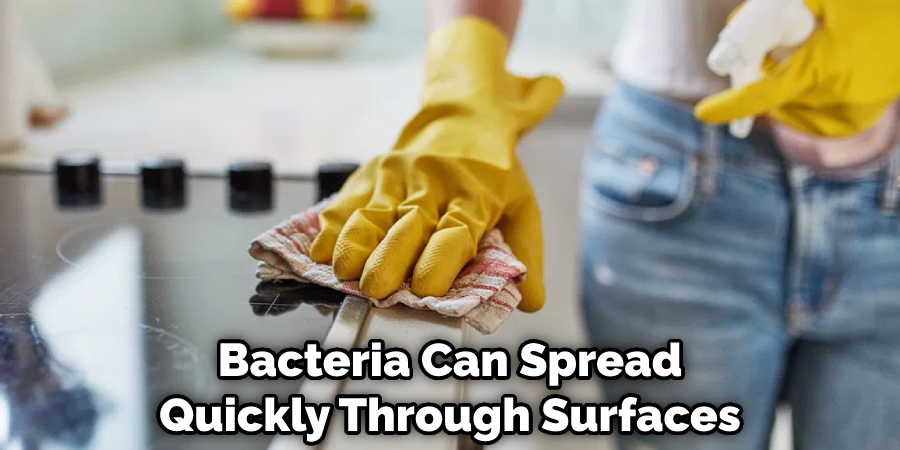
This will remove any dirt or grime that may be harboring bacteria. To disinfect the sink, use a solution of one part bleach to ten parts water. Be sure to wear gloves and avoid getting the solution on your skin or in your eyes. Allow the solution to sit on the surface for at least two minutes before rinsing it off with clear water. By taking these simple steps, you can help keep your kitchen clean and safe from harmful bacteria.
Step 8: Dry the Surface
The kitchen sink is one of the most important places in the home to keep clean. It’s where we prepare food, wash dishes, and often make meals. So it’s no surprise that many people worry about germs and bacteria lurking in their sinks. The good news is that there are plenty of ways to disinfect your kitchen sink without using bleach. One simple way is to wipe down the surface with a clean cloth or paper towel after each use. This will help to remove any dirt, food, or grease that has built up on the surface.
You can also use vinegar or hydrogen peroxide to kill bacteria. Simply mix equal parts vinegar and water, or hydrogen peroxide and water, in a spray bottle and spritz the solution onto the surface of the sink. Let it sit for a few minutes before wiping it dry. You can also add a few drops of essential oils to either of these solutions for an extra boost of disinfecting power. Tea tree oil, lavender oil, and eucalyptus oil are all great options. With just a few simple steps, you can easily disinfect your kitchen sink and keep your family safe from harmful bacteria.
By following these steps and regularly disinfecting your kitchen sink, you can help to keep it clean and reduce the risk of illness or food spoilage. Remember, disinfecting your kitchen sink is an important part of keeping your family safe and healthy. With just a few simple steps and some common household ingredients, you can easily disinfect your kitchen sink without using bleach.
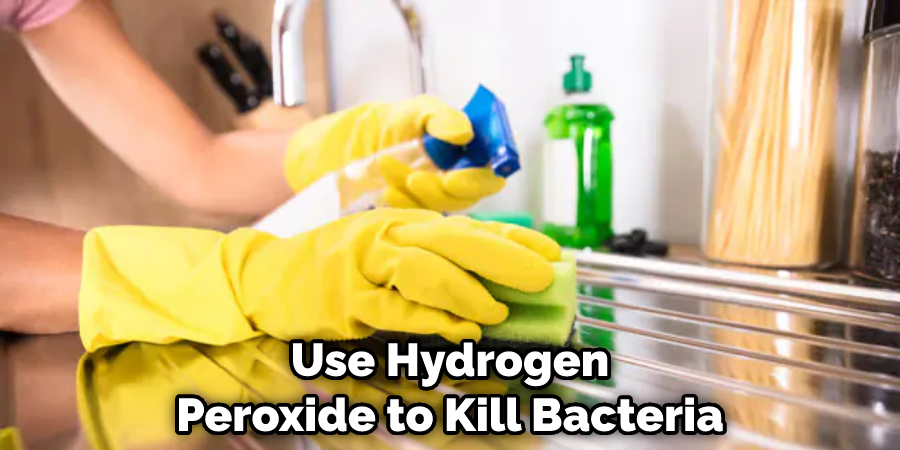
Frequently Asked Questions
How to Disinfect a Kitchen Sink with Vinegar?
Believe it or not, you can disinfect your kitchen sink with vinegar! All you need is a cup of white vinegar and a clean sponge. First, rinse your sink with hot water to remove any food or grease. Then, pour the vinegar into the sink and let it sit for a few minutes. Next, use the sponge to scrub the sink, paying special attention to any areas that seem dirty or grimy. Finally, rinse the sink with hot water and allow it to air dry. Vinegar is a natural disinfectant and will leave your sink looking and smelling fresh and clean!
How to Disinfect a Kitchen Sink with Hydrogen Peroxide?
Hydrogen peroxide is a powerful disinfectant that can be used to clean a variety of surfaces, including kitchen sinks. To disinfect a kitchen sink with hydrogen peroxide, first, remove any food or debris from the sink. Next, add 1 cup of hydrogen peroxide to the sink and let it sit for 5 minutes.
Then, scrub the sink with a sponge or brush and rinse it well with water. Finally, dry the sink with a clean cloth or paper towel. Hydrogen peroxide is an effective way to kill bacteria and viruses, making it a great choice for disinfecting kitchen sinks. Hydrogen peroxide is a powerful disinfectant that is often used in hospitals and clinics due to its effectiveness against a wide range of bacteria and viruses.
To use hydrogen peroxide to disinfect your sink, simply pour a small amount onto a clean cloth or sponge and use it to wipe down the surface of the sink. Let the solution sit for at least one minute before rinsing it away with warm water.
You can also add a few drops of essential oils to the solution to help mask the hydrogen peroxide smell. Whichever method you choose, remember to always follow up by rinsing away any remaining debris from the sink with warm water and a clean cloth or sponge. This will help ensure that your sink is truly clean and bacteria-free.
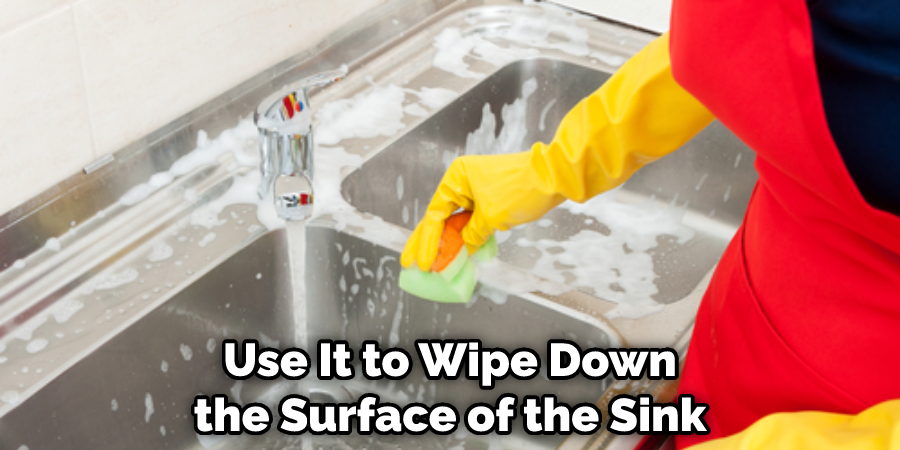
Conclusion
Disinfecting your kitchen sink is important to maintaining a clean and healthy home. You should carefully determine how to disinfect kitchen sink without bleach. You can disinfect your kitchen sink without using bleach by using white vinegar, baking soda, hydrogen peroxide, or citrus fruit peels.
With a little bit of elbow grease and these natural cleaning products, your kitchen sink will be sparkling in no time! By following these simple steps, you can help keep your Kitchen sink bacteria-free!
You Can Check It Out to Cut Parchment Paper for Cake Pans
Professional Focus
Angela Ervin, a former interior designer turned blogger, specializes in kitchen design and renovations. Through her website, she blends her passion for cooking with design expertise, sharing practical and creative ideas. Known for balancing functionality and beauty, Angela’s insightful content has made her a trusted voice in home design and lifestyle.
About the Author
Angela Ervin, an experienced interior designer and blogger, combines her passion for kitchen renovations with storytelling. Living in Petersburg with her family, she enjoys cooking and testing her projects firsthand. Known for her humor and relatable style, Angela shares creative, functional design insights through her content, making her a trusted voice in home design.
Education History
University: Virginia Commonwealth University
Degree: Bachelor of Fine Arts (BFA) in Interior Design
- Angela’s education at VCU focused on mastering core interior design principles, including spatial planning, color theory, materials selection, and sustainable design practices.
- She gained hands-on experience through studio projects and collaborative design exercises, which honed her ability to create functional and aesthetically pleasing environments.
- Her coursework also emphasized problem-solving and practical applications of design, preparing her for real-world projects like her self-directed kitchen renovations.
- The program’s strong foundation in both technical skills and creative expression shaped Angela’s ability to seamlessly integrate form and function in her work.


